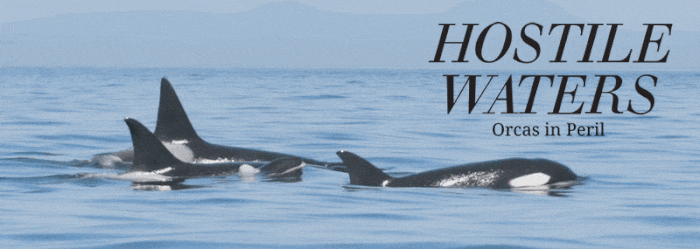A mysterious stranding of the elusive whale 60 years ago and recent photographs prompted scientists to embark on their search. They got a first live look this year.
A team of international scientists working off the tip of southern Chile got their first live look at what might be a new species of killer whale, according to the National Oceanic and Atmospheric Administration.
Scientists had believed that the so-called “Type D” whales — which appear to be distinct from other previously identified whale species — existed based on a stranding 60 years ago in New Zealand and from scattered tourists’ photographs and fishermen’s stories, the federal agency said in a news statement made public on Thursday.
But researchers had “never actually seen it,” said Michael Milstein, public-affairs officer for the National Oceanic and Atmospheric Administration (NOAA) Fisheries.
Michael McGowen, marine-mammal curator at the Smithsonian, said calling it a new species without genetic data may be premature. Still, he said, “I think it’s pretty remarkable that there are still many things out there in the ocean like a huge killer whale that we don’t know about.”
Genetic samples collected from the whale will determine whether the animal, which has a distinctly different color pattern and body shape from other whale species, is indeed new. The team should know for sure soon: A crowning achievement was getting a chunk of flesh the size of a pencil eraser with a biopsy dart.
“We are very excited about the genetic analyses to come. ‘Type D’ killer whales could be the largest undescribed animal left on the planet and a clear indication of how little we know about life in our oceans,” said Bob Pitman, a researcher from NOAA Fisheries’ Southwest Fisheries Science Center in La Jolla, California.
Their diet is not known for sure, but the killer whales are suspected to be fish eaters because groups have been photographed around long-line vessels where they reportedly snatch Patagonian toothfish, also called Chilean sea bass, right off fishermen’s lines.
The team’s encounter with the distinctive whales came after they spent more than a week at anchor earlier this year, waiting out the storms at Cape Horn, at the southern tip of Chile, NOAA said.
It was there that scientists collected three biopsy samples, tiny bits of skin harmlessly taken from the whales with a crossbow dart, from a group of Type D killer whales, the agency said.
The first record of the unusual killer whales came in 1955, when 17 animals stranded on the coast of Paraparaumu, New Zealand. Compared to other killer whales, they had more rounded heads, a narrower and more pointed dorsal fin, and a tiny white eye patch; no whales like this had ever been described before, NOAA said.
Initially, scientists speculated that the unique look might have been a genetic aberration only seen in those stranded whales, Milstein wrote in the news release. In 2005, a French scientist showed Pitman photographs of odd‐looking killer whales that had taken fish from commercial fishing lines near the Crozet Islands in the southern Indian Ocean.
They had the same tiny eye patches and bulbous heads noted on the stranded whales in New Zealand, suggesting that the species could be widespread.
Milstein wrote that burgeoning tourism in Antarctica has led to a huge increase in the amount of high-quality wildlife photography.
To monitor the distribution, movements and abundance of killer whales in Antarctic waters, Pitman and colleagues began to collect killer-whale images from the southern ocean, including from tour vessels.
Among the tens of thousands of images compiled were six additional sightings of the unique whales, according to NOAA.
Eight years ago, Pitman and colleagues published a paper in the scientific journal Polar Biology describing the Type D killer whales with photos from each encounter and a map of the sighting locations.
The sightings indicated a distribution around the entire continent of Antarctica, but within subantarctic waters. Because Type D killer whales seemed to avoid the coldest waters, the authors suggested “subantarctic killer whale” as a common name.
The research team set off in January from Ushuaia, Argentina, on the 22‐meter research vessel Australis, to search for the elusive Type D killer whale, NOAA said.
While waiting for a storm to pass, the group’s luck changed, NOAA said, and they finally found the animals Pitman had sought for 14 years.
Material from The Associated Press was used in this story. Staff writer Lynda V. Mapes contributed to this story.
